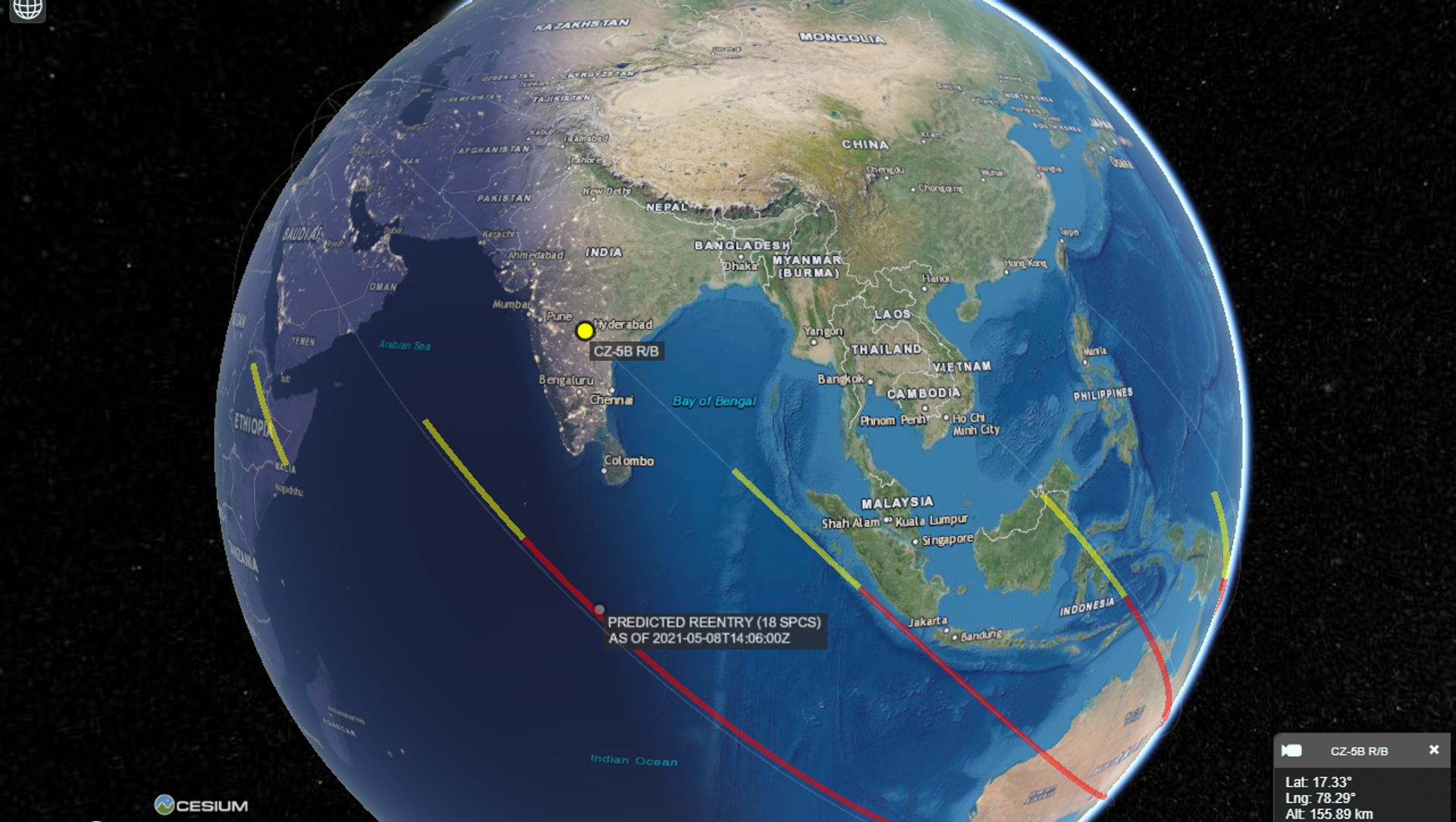Scientific agencies around the world continue to try and predict where the debris from the Chinese CZ-5B rocket will eventually land, providing maps with possible trajectories.
According to earlier calculations by Russia's Roscosmos, the rocket could enter Earth’s atmosphere as soon as 9 May, somewhere in the Pacific Ocean.
On early Sunday, Roscosmos estimated that the potential zone of risk includes big cities like Madrid, Rome, Cairo, Riyadh and Canberra.
— РОГОЗИН (@Rogozin) May 8, 2021
CelesTrack released a map, also available in a 3D-version, showing several possible paths for debris to fall and also a tracker of the CZ-5B. Corridors pictured on the map also show decaying altitude, starting at yellow below 150 km and then red below 146 km.
CelesTrak just added a fully interactive view of the Long March-5B reentry with corridors that more accurately reflect how this event evolves and where reentry can reasonably be expected to be seen (based on @18SPCS data): https://t.co/Gdwbvsms0Y. pic.twitter.com/fH21mgjnpu
— T.S. Kelso (@TSKelso) May 8, 2021
Space-Track.org estimated that the rocket body's re-entry will occur at around 2:00 GMT on 9 May, somewhere above the Mediterranean sea.
New update by @SpaceTrackOrg:
— Meithan West (@meithan42) May 9, 2021
Reentry: 9 may 02:11 UTC ± 1 hour
Reentry is inminent.
Very similar to last prediction, but with center of reentry window further west.
90% of this track is over ocean. pic.twitter.com/ZZYgq9gDU5
The body of the rapidly tumbling Chinese rocket, weighing some 20 tons, is hurtling in the atmosphere at some 27,000 kilometres per hour (~17,000 miles per hour). The launch rocket earlier delivered part of a Chinese orbital station Tiangong (“Heavenly Palace”) into near-Earth orbit.



